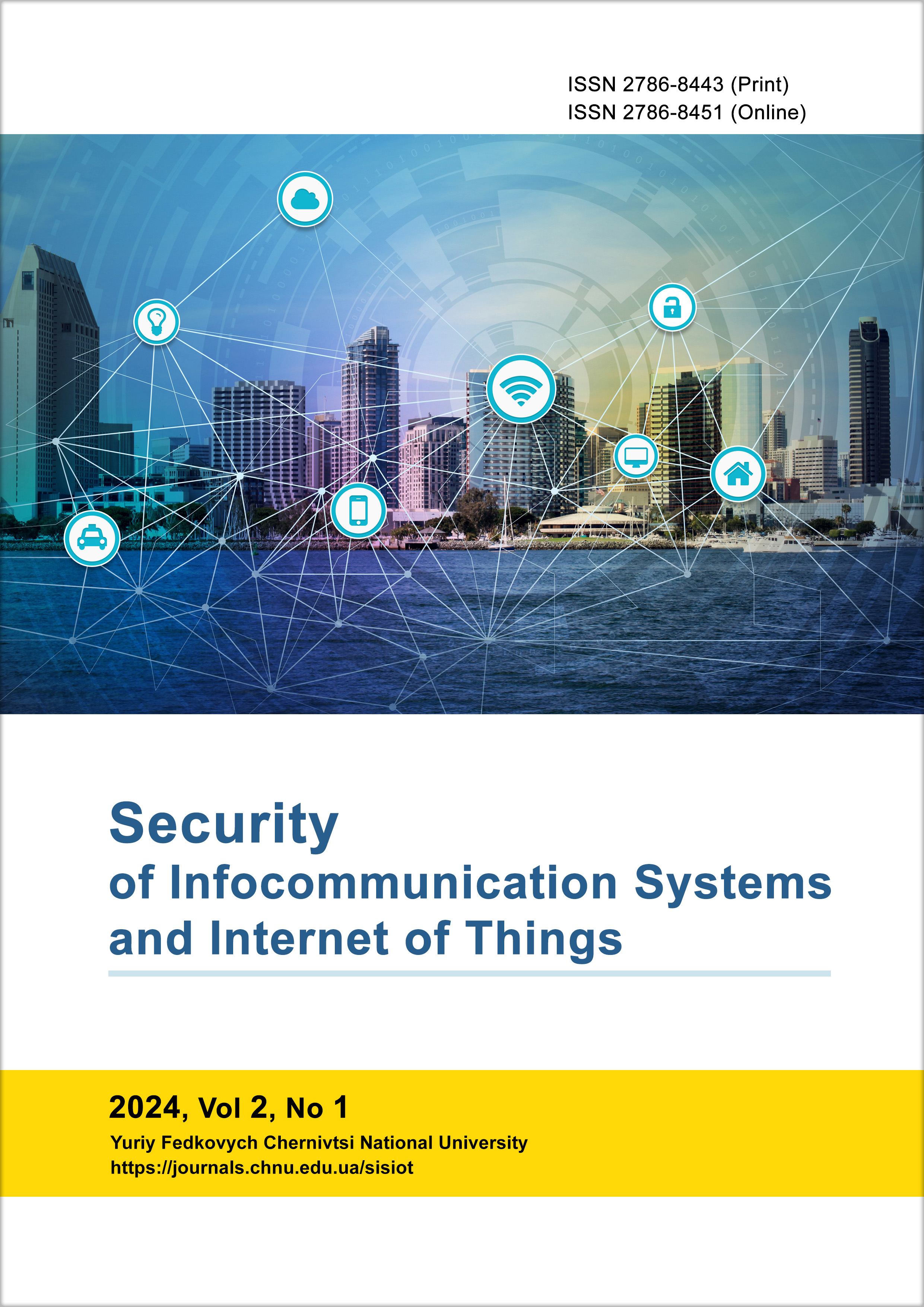Spectrum Sensing Using Wavelet Transforms and Filtering Under Signal Frequency Distortion and Fading Conditions
DOI:
https://doi.org/10.31861/sisiot2024.1.01011Keywords:
wavelet transforms, Morlet or Daubechies, signal-to-noise ratio, Butterworth filters, Chebyshev filtersAbstract
This article explores improving the accuracy and reliability of spectrum sensing methods within cognitive radio networks. The primary focus is on how signal fading and frequency distortion influence the results of spectral analysis. These issues can severely impact the precision of signal detection, making adaptive methods and filters indispensable for accurately detecting changes in the spectral landscape. The purpose of the paper is to evaluate the effectiveness of various adaptive methods and filters – such as wavelet transforms, along with Butterworth, Chebyshev, and Kaiser filters—in improving the detection of changes within the spectral environment across different signal-to-noise ratio (SNR) levels. The research spans a broad frequency range, concentrating on pivotal technologies like 5G NR, Wi-Fi 6, DVB-T2, and GPS, each having unique requirements for signal precision and dependability. The spectrum sensing approach described in the article achieves high signal detection accuracy under favorable conditions, particularly when the SNR is strong. Experiments revealed that with SNR values above 1 dB, the signal detection accuracy (True Positive Rate, or TPR) for all technologies examined remains at or above 0.90. For instance, the TPR for 5G NR is 0.92 at an SNR of 1 dB, while for Wi-Fi 6, it stands at 0.90. However, the effectiveness of the method declines as the SNR decreases. For example, with 5G NR, the TPR drops to 0.70 at an SNR of -21 dB, indicating a heightened probability of false signal detection. Similar patterns are observed with Wi-Fi 6, where the TPR falls to 0.65, with DVB-T2 to 0.68, and GPS to 0.66. Additionally, the average noise level rises as SNR diminishes, making accurate signal detection increasingly challenging and emphasizing the need for further refinement of these methods. The findings underscore the need for ongoing advancements in spectrum monitoring, especially under low SNR conditions. Future research should prioritize developing new or refining existing adaptive algorithms capable of operating effectively in complex spectral environments. Exploring the impact of other filtering and transformation methods could also yield valuable insights. Moreover, the incorporation of machine learning techniques offers a promising path for boosting the adaptability and accuracy of spectrum monitoring in real-world telecommunication systems.
Downloads
References
A. O. Anosov, M. M. Procenko, O. L. Dubynko, and M. Y. Pavlynko, "Application of wavelet transform for digital signal analysis," Telecommunication Systems, no. 33, pp. 38-42, 2018.
N. I. Bartkiv, "Methods and localization of unauthorized emission sources," Information Security, no. 1, pp. 68-73, 2009.
I. M. Вaranovska, M. M. Melnyk, and V. V. Koval, "Increasing the efficiency of cognitive radio networks based on adaptive signal processing algorithms," Telecommunication Systems, no. 5, pp. 91-98, 2022.
S. I. Bevs and Y. V. Melnyk, "Optimization of cognitive radio networks taking into account dynamic changes in the environment," Bulletin of NTUU «KPI», Series «Radiotechnique», vol. 4, pp. 45-50, 2020.
V. P. Lysechko and I. I. Soproniuk, "Spectral monitoring method in cognitive radio networks based on FFT," Bulletin of NTUU «KPI», Series «Radiotechnique», vol. 16, pp. 173-180, 2011.
V. P. Lysechko, I. I. Soproniuk, Y. H. Stepanenko, and N. O. Briuzgina, "Study of spectrum analysis methods in cognitive radio networks," Collection of Scientific Works, Kharkiv: HUPS named after I. Kozheduba, vol. 3 (25), pp. 137-145, 2010.
V. M. Frolov and A. M. Kotlyar, "Adaptive signal processing algorithms in conditions of noise and interference," Radioelectronics, no. 3, pp. 44-51, 2021.
S. Haykin, "Cognitive radio: brain-empowered wireless communications," IEEE Journal on Selected Areas in Communications, vol. 23, no. 2, pp. 201-220, 2005.
S. V. Indyk and V. P. Lysechko, "Study of ensemble properties of complex signals obtained by frequency filtering of pseudorandom sequences with low interaction in the time domain," Collection of Scientific Works, Kharkiv: HUPS named after I. Kozheduba, vol. 4 (66), pp. 46-50, 2020.
V. Havryliuk, "Audio frequency track circuits monitoring based on wavelet transform and artificial neural network classifier," in 2019 IEEE 2nd Ukraine Conference on Electrical and Computer Engineering (UKRCON).
I. Saiapina, M. Babaiev, and O. Аnanіevа, "Reducing noise influence on an audio frequency track circuit," MATEC Web of Conferences, 2019.
M. M. Procenko, "Methodology for selecting a wavelet function for digital signal processing," Journal of ZSTU, no. 49, pp. 97-100, 2009.
Published
Issue
Section
License
Copyright (c) 2024 Security of Infocommunication Systems and Internet of Things

This work is licensed under a Creative Commons Attribution 4.0 International License.









